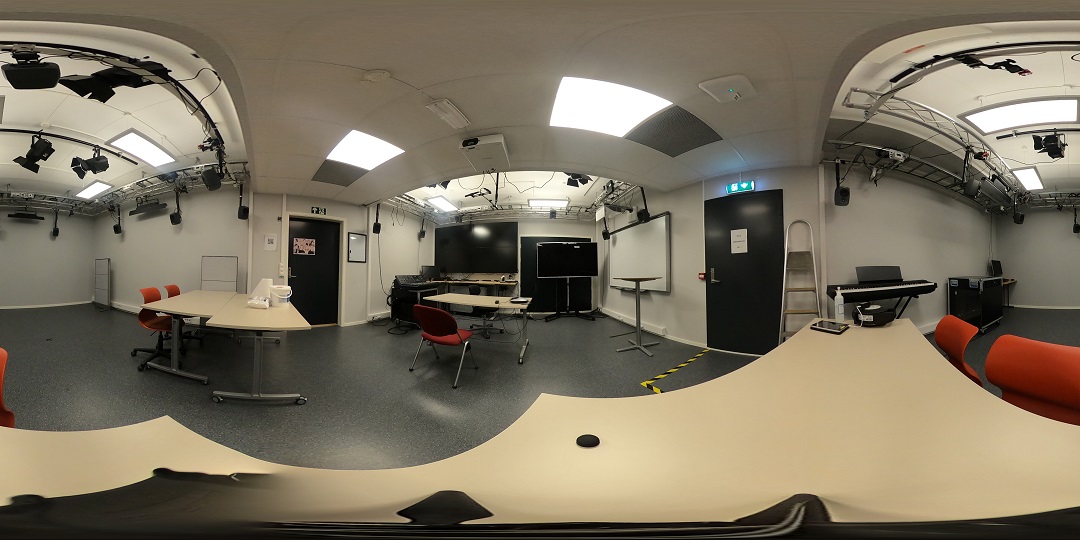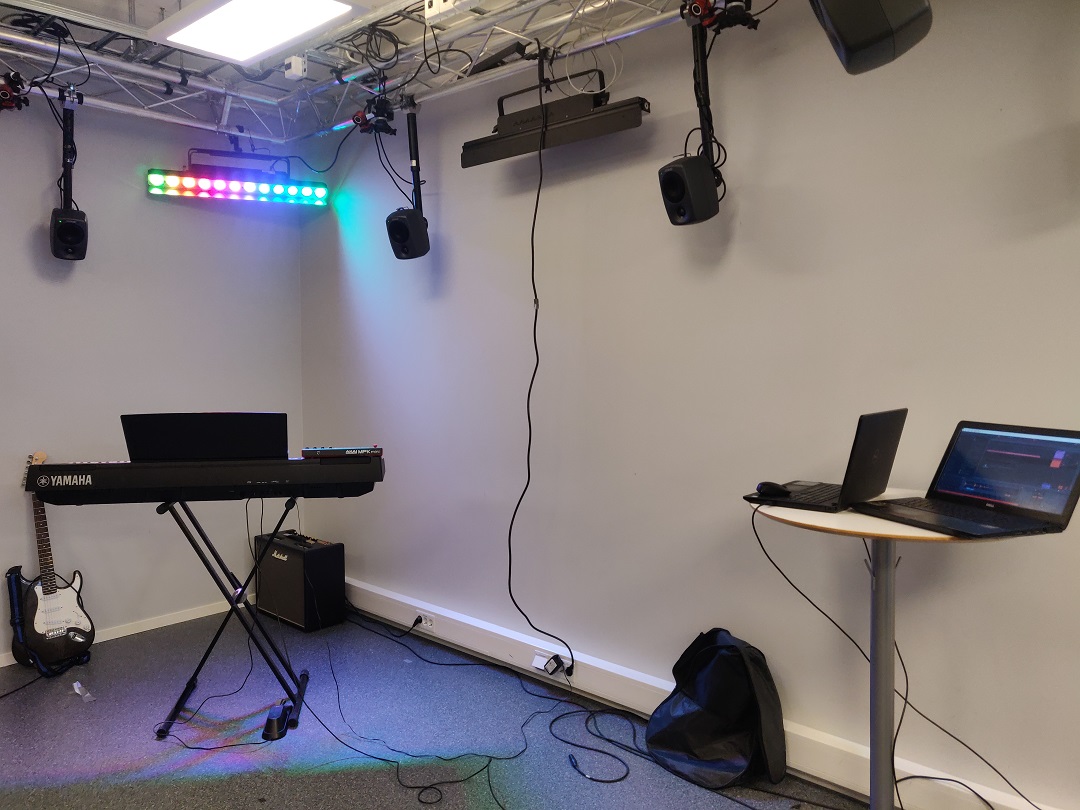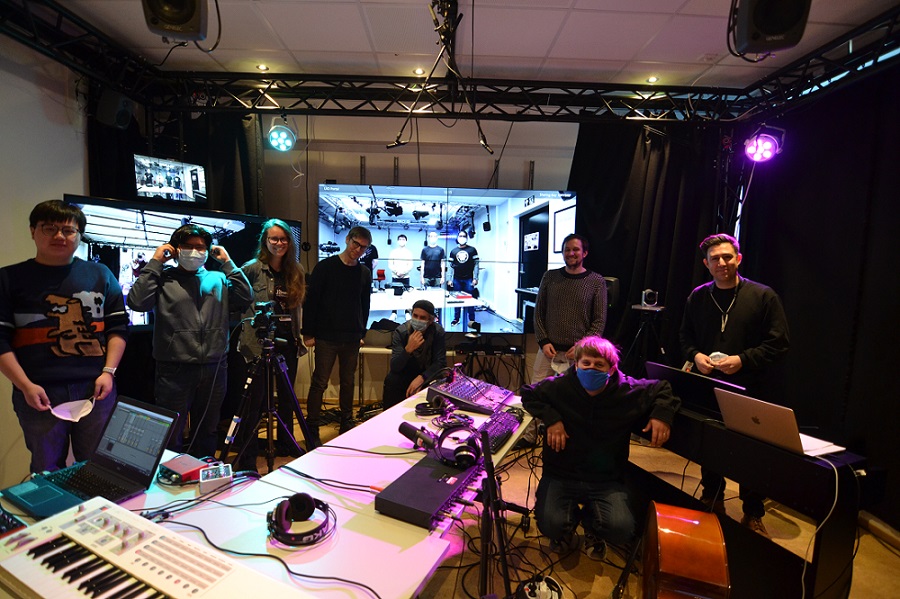Preparing NTNU portal for the spring 2021 Concert.
Overview:
Experiencing portal concert last semester in fall 2020 over Jamulus and a bit of JamKazam, It was time to organize and play music physically in the portal using the best of the low latency audio-video communications we have to learn and improve upon in the MCT: LoLa, Tico and Zoom. The uneven distribution of people, 3 folks at NTNU and 8 at UiO, meant, we at the NTNU side had a lot of roles to play, but this also meant most of the processing was done on the UiO side, and we just had to send the best-polished signals towards UiO. The result was a fun and enriching experience for all of us. Here’s a picture of how portal looked before we started reorganizing everything for the concert.

Tasks at Hand:
NTNU Concert Setup

Since most of the processing was done at the Oslo portal, there were three main tasks at hand in Trondheim - Audio stream, Video stream, and Communications. Our numbers matched perfectly with tasks in hand and we divided them as Lindsay, responsible for Audio, Abhishek for Video, and Willie responsible for communications between the portals.
Audio Setup: Our audio setup was fairly straightforward, contrary to the Oslo side where they had scenes set up for all the teams. We instead had 3 channels for all our instruments, One channel for Abhishek’s Guitar, one for Willie’s Luitar, and one combined for routing Ableton signal for Lindsay’s Harp and midi Drums, also for Abhishek’s midi Drums. We had basic EQing and soft compression on the Guitar and Luitar channels. For the USB input (Ableton) we didn’t have any effects on the mixer, instead, I and Lindsay processed the audio in Ableton, which gave us more flexibility and scope for manipulation.
Video Setup: Since Oslo was the streaming point for the live stream on YouTube and had already set up the OBS, we just had to send the video stream directly via TICO. At first, we had two cameras set up, one focusing on the performer and one capturing a wide-angle view of the room. But then we decided to go only with one, as it’s just too much data to send over the internet with LoLa working in the background. It could work but at the cost of latency, which we at the core, aim to minimize at all levels. We usually use the PTZ camera to capture video and send it to the Oslo portal, but this time we framed up a big Sony camera and connected it using SDI cable and a mapper to connect it to the Tico box. We could then easily zoom in and out and also follow the performer moving around performing.
Communication: Willie was the main person responsible for all the communication and the equipment we used. To let the other side pay attention to what we want to communicate can be a huge task at times, as this is a problem that we Trondheim folks face, that sometimes we feel neglected if there’s a lot of things happening in the Oslo side, especially if we all 11 people are present at the portals. The main solution is then to efficiently and at times communicate loudly.
Final Reflection:

After doing the portal course digitally for the first semester, I was pretty excited to have hands-on experience with all the advanced technology we had in portals, physically meeting and doing some work together again felt good for a change. My main goal was to learn more about the do’s and don’ts of being in this virtual-physical space, and also to learn the MIDAS M32 mixer which can get complicated and can feel like rocket science at times. After Organizing a “Telematic Concert” and playing also listening to my classmates jam together, I can safely say that I have to a certain extent achieved my goals. The routing within the MIDAS M32 is still a complicated problem I would like to solve and dig deep into, but overall it was a fruitful experience. Thank you Eigil, Guy, and everyone for the course.
